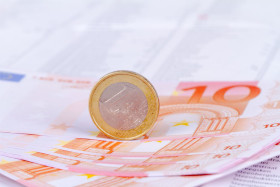The euro is trading at its best level against the US dollar since March as European Union (EU) leaders confirm they have made progress on stimulus and debt talks. The currency had been mainly unaffected by the central bank leaving interest rates and its quantitative easing efforts unchanged, but the fiscal policy could drive the euro for the remainder of the month.
EU leaders have been holding a marathon meeting to iron out the details over a 750 billion-euro ($858.30 billion) recovery fund proposal. The so-called frugal four, including Austrian Chancellor Sebastian Kurz and Dutch Prime Minister Mark Rutte, revealed that negotiations were close to falling through. However, they are now working on a new EU compromise suggestion, leading to significant progress among eurozone nations.
In May, European Commission President Ursula von der Leyen unveiled a scheme to resuscitate and revitalize the European economy. It was reported at the time that the plan would include 500 billion euros in grants and 250 billion euros in loans to member states, with much of it being borrowed in capital markets and fully repaid by 2058.
Although the frugal wealthier European states in the north â Austria, Denmark, the Netherlands, and Sweden â were somewhat pleased by the proposal, they have since been reluctant over the specifics. The countries are now recommending a smaller fund and limiting the grants and loansâ payouts. European Council President Charles Michel called the discussions âmission impossible,â and several diplomats noted that the EU leadersâ summit might be abandoned.
Are the 27 EU leaders capable of building European unity and trust or, because of a deep rift, will we present ourselves as a weak Europe, undermined by distrust.
I wish that we succeed in getting a deal and that the European media can headline tomorrow that the EU succeeded in a Mission Impossible.
What does this hold for the euro? The currency might find support on the prospect of a stimulus, even if talks end prematurely. Plus, the euro could maintain its momentum on a weaker greenback as the US Dollar Index tumbled 0.14% to 95.81 to kick off the trading week. With ample dollar liquidity and concerning domestic political developments, the buck is 5% below its 2020 peak.
On Friday, the consumer price index in the euro area rose 0.3% in June, up from the 0.1% drop in May. The core inflation rate surged at an annualized rate of 0.8% last month. Construction output plummeted 11.9% year-over-year in May.
The 10-year bund dipped 0.008% to -0.461%. Italyâs 10-year bond fell 0.083% to 1.157%. Franceâs 10-year bond also slipped 0.022% to -0.161%.
The EUR/USD currency pair edged up 0.01% to 1.1430, from an opening of 1.1429, at 14:53 GMT on Monday. The EUR/JPY rose 0.09% to 122.44, from an opening of 122.30.
If you have any questions, comments, or opinions regarding the Euro, feel free to post them using the commentary form below.
